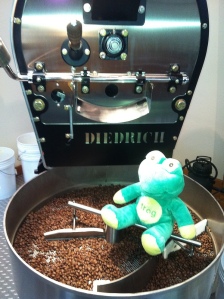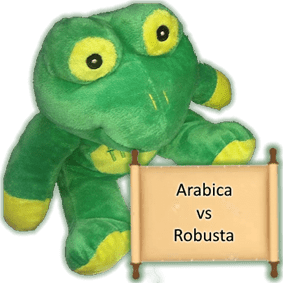7 Feb Diedrich Notes
Introduction to roasting profiles
Today we concentrated on how different profiles affect coffee taste. There are two analogies that you can use with coffee roasting:
- Coffee is like a big cargo ship to steer it in one direction or the other you need to do so slowly and plan ahead. A coffee roast needs to be planned 2 minutes ahead of time so that you variables are considered now for where you want to be in 2 minutes. At the same time
- Coffee is like a locomotive to get it going takes a while, and then once it is at full speed it is hard to change anything dramatically, without dramatic results
Coffee has around 1,800 components in it, roasting can manipulate 1,500 of those, so a roast profile needs to be established and followed. Today we all tried to follow the roasting profile below to varying success. So roasted too quickly some too slowly.

Some of us worked on the 12kg Diedrich. Coffee roasted on the 12kg and 5 kg manual was Colombia Huila “Monserrate”. On the 12kg we roasted 6 pounds (2.72 kgs) on the 5 kg we roasted 2.5 pounds (1.13 kgs). These amounts were chosen to make it a little harder to follow the profile.
|
Frog Quaffer with a profile on the 12kg |
Frog Quaffer on the coffee roasted on the 5kgs |
After we had a number of roasts we then cupped all the different roasts to identify the best profiles. So quick notes:
- Coffee that where roasted quickly had a lot of brightness,
- Coffees that roasted to slowly where milder.
- Coffees where there wall stalled roasts has a baked or biscuit taste
- Under roasted coffees tasted a little green
- And over roasted a little burnt

Remember all the coffees are the same it is how they were roasted and exposed to temperatures that changed. These minor changes affected the taste dramatically.
Setting up an evaluation for the next day
After we had learnt the roasters, by following the roast profiles we were given a coffee from Costa Rican coffee Candelila.
We roasted to a profile to before first crack, past first crack, before second crack, on second crack and past second crack. So that tomorrow we would be able to compare the roasts.
Day ended just before 18:40, so 10 hours of roasting to a profile under our belt, interrupted by a tasting.





Reblogged this on lionsbaycoffee's Blog and commented:
Visit http://www.lionsbaycoffeecompany.com